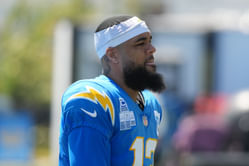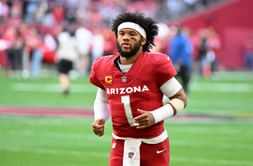Fantasy football was first invented in 1962. Since then the game has seen itself take shape into the product that it is today.
There are different kinds of fantasy football leagues now. From dynasty to keeper to redraft to best ball and more. In all these leagues, drafting remains common.
Winning matters in fantasy football and fantasy managers want to assemble the best roster that’s capable of winning.
Drafting is a primary part of building a roster and there’s a lot of planning and strategy that goes into it. One of the popular concepts in drafting in fantasy football is that of value-based drafting.
If you’re new to fantasy football, VBD might sound confusing. But do not worry. We are here to break it down.
With the 2024 fantasy football season on the horizon, be sure to check out our free Fantasy Trade Analyzerto lock down your squad for the year.
Understanding Value-Based Drafting
Understanding Value-Based Drafting requires you to understand the concept of winning. You win by out scoring. There are different factors that go into the process of winning. But at the core of winning lies out scoring your opponent.
The same applies for fantasy football as well. It doesn’t matter how much you score. It’s about did you score more than your opponent?
That is one of the primary principles of value-based drafting - the value of a player isn’t determined by the number of fantasy points he scores but by the level to which he can outscore the other player at his position.
To break it down, value-based drafting is a strategy used by the fantasy managers that sheds light and emphasis on a player’s value over everything. By doing so, the managers compare their opponents’ picks and draft the most valuable player over the best player available.
Also Read: How To Play Fantasy Footbal in 2024?- A Complete Beginner’s Guide
Application of Value-Based Drafting
One of the most important reasons value-based drafting strategy is used is because VBD introduces reasoning and diminishes exaggeration. Fantasy managers use VBD to target their rival’s weaknesses and achieve competitive advantage.
Fantasy managers will have to be thoroughly knowledgeable of the values of the players available. Understanding the roles of players and what they bring to the table is extremely crucial to optimize the roster spot.
There are few stats that go into value-based drafting.
VORP - Value Over Replacement Player
VORP stands for value over replacement players. What this means in VBD is that it determines the degree to which the player you want to draft is better than the best player on the waivers. To determine the VORP of a player, managers should compare the player to his exact positional player on the waivers.
VOLS - Value Over Last Starter
VOLS stands for value over last starter. What this does is it compares the player to the poorest starting player at the respective position to determine the value. ANy player who has a VOLS of zero is typically benched.
VONA - Value Over Next Available
VONA stands for value over next available. What it does is it measures the value of the player the manager is considering drafting to the next available player at the same position. This is an important stat in measuring the value. It determines the value of the current options in comparison to the player of the same position on the upcoming picks.
FAQs
A. VBD stands for value-based drafting. It is a strategy used that focuses primarily on the value of a player over any other stat.
A. In general, a 12-team fantasy football draft takes about 90 minutes to two hours.
A. ECR stands for expert consensus ranking. ECR is the average rankings that the experts assign to NFL players.
A. ADP is an acronym for average draft position. ADP is the average position in which a particular player is drafted across different mock drafts and fantasy drafts.









